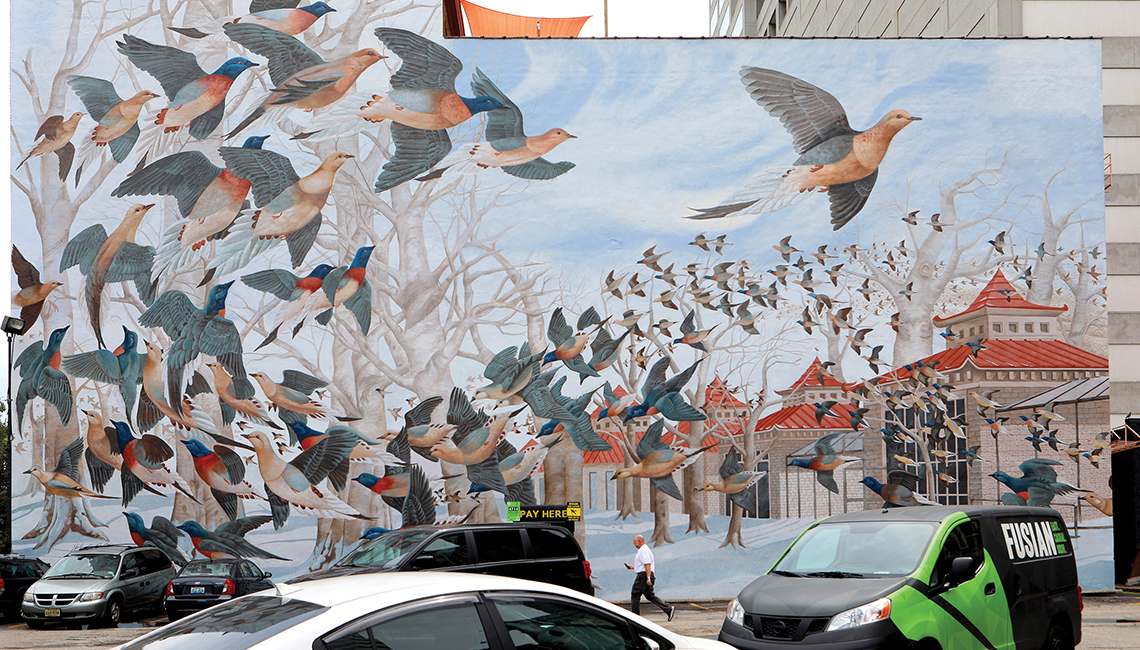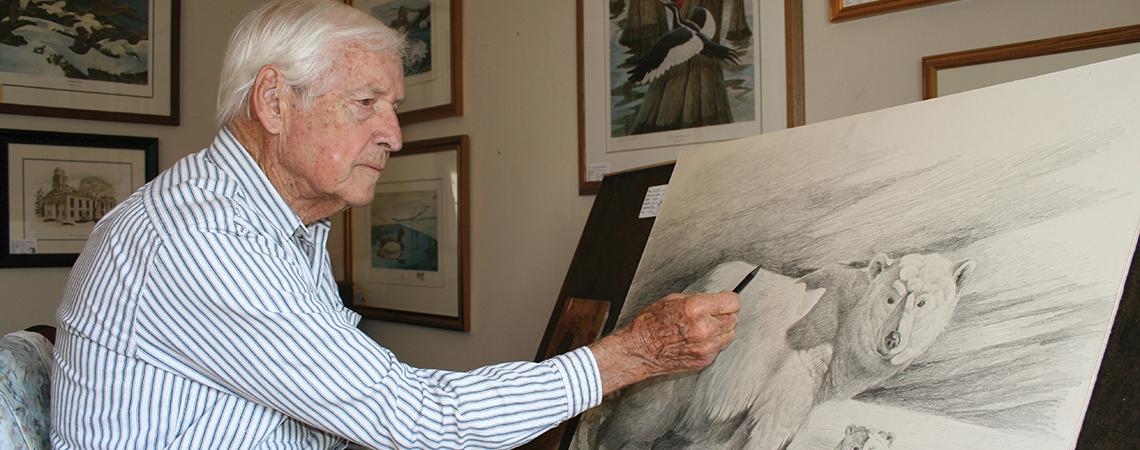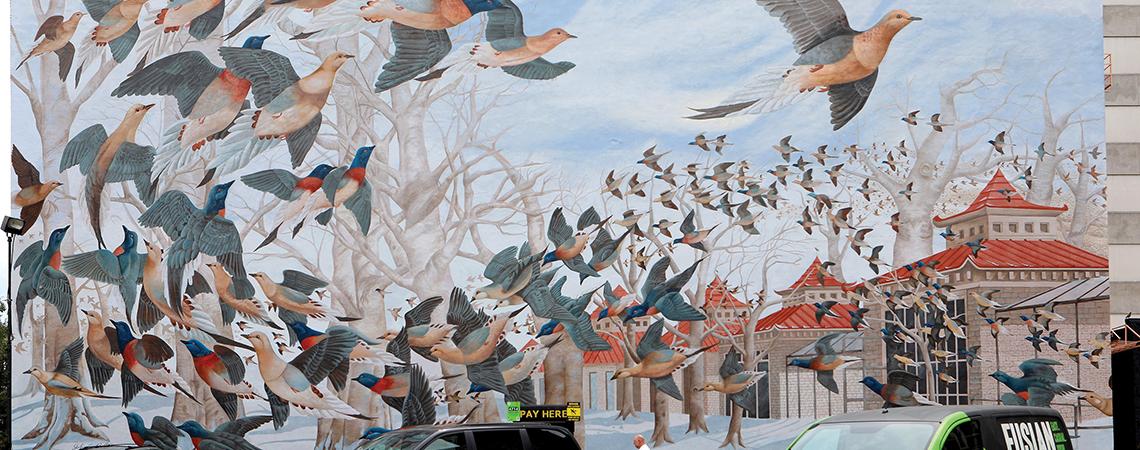At the corner of Vine and West 8th in downtown Cincinnati, a giant mural covers the entire side of a six-story building. It depicts a colorful, swirling flock of birds: passenger pigeons, now extinct. The last passenger pigeon, Martha, died at the Cincinnati Zoo on Sept. 1, 1914.
That 2014 mural, which commemorates the 100th anniversary of Martha’s death and the species’ sad passing, was the work of internationally known wildlife artist John Ruthven — one of Cincinnati’s most famous and beloved native sons. Ruthven died Oct. 11, 2020, at the age of 95.
John Ruthven passed away this year at the age of 95.
If it has to do with birds in or around Cincinnati, Ruthven probably was part of it.
Born in 1924, Ruthven knew he wanted to be a professional artist from an early age, preferably a wildlife artist. Like so many young men of that era, however, his dream was deferred by World War II; John enlisted in the U.S. Navy after he graduated from high school in 1943.
After the war, Ruthven returned to Cincinnati, married, began a family, and opened a commercial art business. One of his first jobs was to create the image of the young boy found on cans of Play-Doh, the children’s modeling clay. He also continued to draw and paint wildlife pictures in his spare time.
It was in 1960 that he submitted an entry to the federal Duck Stamp contest. The picture depicted a pair of swimming redhead ducks, male and female, followed by their small brood of young ducklings.
To Ruthven’s surprise and elation, his painting was chosen as the contest’s winner that year and appeared on the 1960–61 federal Duck Stamp. The win gained Ruthven instant fame as a wildlife artist and changed his art career forever. He made the decision to close his commercial art studio to pursue wildlife art exclusively, full time. It’s a decision that he and tens of thousands of wildlife-art enthusiasts never regretted.
Ruthven had always idolized John James Audubon (1785–1851) and his art. Audubon had even spent time in Cincinnati painting bird portraits. It’s not surprising, then, that Ruthven’s painting style eventually evolved to resemble that of Audubon’s — so much so, that John Ruthven would become known as the “20th-century Audubon.”
Counting his many sketches, drawings, and completed paintings, Ruthven produced thousands of pictures during a career spanning some 60 years. It was a career that took him around the world in search of new and exotic wild species to paint. In 1972, Ducks Unlimited named Ruthven its first Artist of the Year, and prints from his paintings raised nearly $2 million for North American wetlands preservation.
Ruthven also painted Ohio’s first annual Wetlands Habitat Stamp and a cardinal for Ohio’s most popular vehicle license plate, raising millions of dollars for the Ohio Division of Wildlife in the process. Today, Ruthven paintings hang in countless homes, businesses, and museums, including the Smithsonian.
Ruthven received commissions to paint three pictures of the bald eagle for presentation to presidents of the United States — Gerald Ford, Ronald Reagan, and George H.W. Bush — and the official unveilings all took place at the White House. A fourth president, George W. Bush, presented John Ruthven the 2004 National Medal of Arts.
Late in life, Ruthven was asked if he would still paint were it not for the continued commissions he received. “Oh, yes,” was his quick response. “I’d paint for myself. I’d have to. One lifetime is not enough to do it all.”
John and me
In 1996, I had the privilege and honor of collaborating with fellow Ohioan John Ruthven to produce the Ohio Wildlife Viewing Guide. Published by Falcon Press, it listed 80 of the Buckeye State’s best wildlife viewing sites, part of the national Watchable Wildlife Program. Ruthven created the original artwork for the 96-page booklet, while I provided the text.
I’d never met John before, but quickly learned during the project that he was the consummate professional. Not only was his artwork scientifically accurate and detailed — six full-color plates of six wildlife species each — it was also beautiful.
I found John, as most people did, to be extremely outgoing, friendly, and down to earth — quickly able to make you feel as if you were a friend he’d known all his life.











